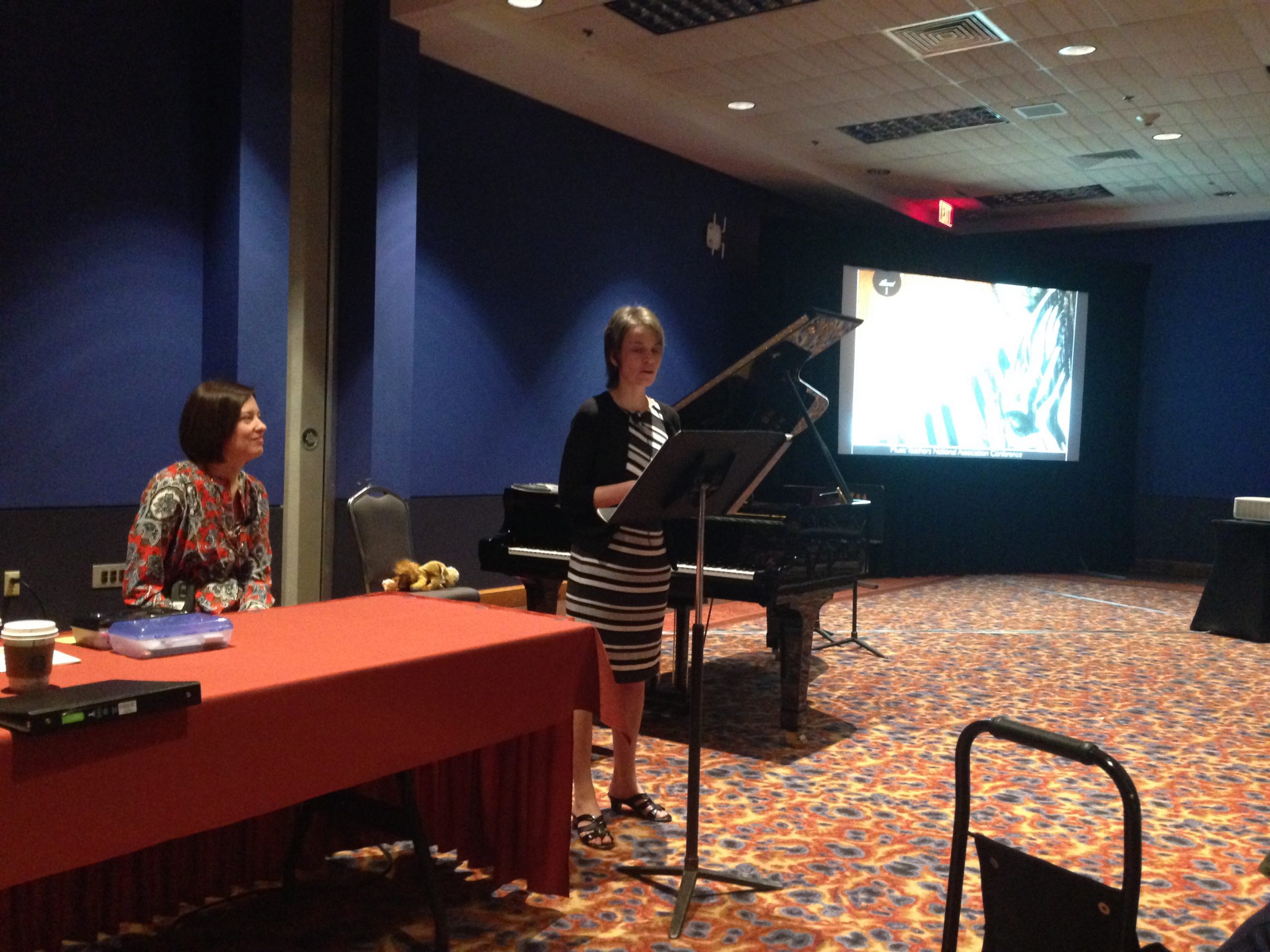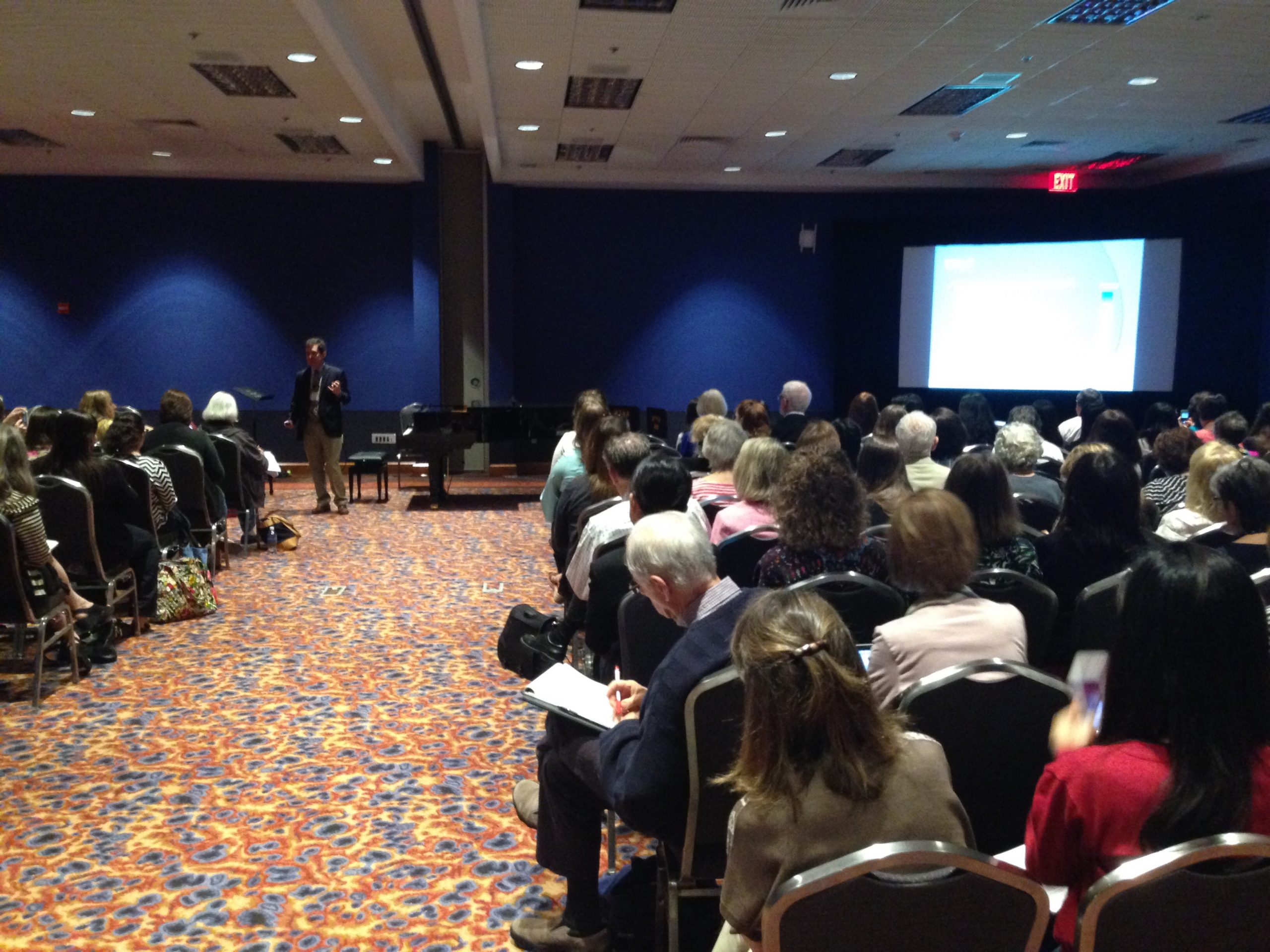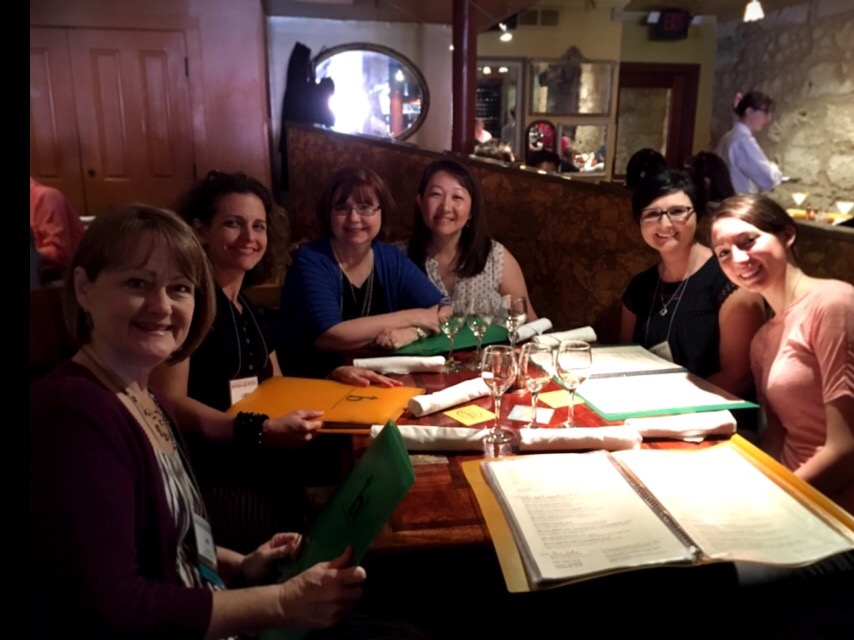Please enjoy my notes from Day 3 of the 2016 MTNA National Conference in San Antonio, Texas! Click here to go back to Day 2.
8:00am Exhibitor Showcase: Piano Safari
The authors of the Piano Safari method, Katherine Fisher and Julie Knerr, gave a very enjoyable session. Their method features a combination of an Intervallic Reading Apporach plus rote teaching to develop music literacy in the student.
Rote teaching is the systematic teaching of musical and artistic concepts through modeling rather than through music notation. Music is an aural art and thus transcends notation. Rote teaching is NOT training students to copy the teacher without any thought or understanding. And it can be used to increase reading ability.
Piano Safari offers a combination of pieces intended to be learned by rite and then by reading. There are many exciting benefits to learning rote pieces: Rote pieces allow students to play exciting music. They increase concentration and develop musical memory. More attention is free for technique. It is lends itself to more creativity: improvising and composing. The student also develops a strong confidence in their playing and performing ability. Learn more at PianoSafari.com. Book 3 of the series has just been released.
9:15am It’s Bass-ic! Shining A Light Down Under, by Andrew Hisey
The bass line is the harmonic foundation of Western music, generally, and it can also be a melodic voice at times.
The goal is to develop an awareness of bass, even from an elementary level. With elementary students, we help them learn that the LH part does not nessessarily equal the bass line. An example of an activity towards this would be to play tonic and dominant notes to accompany their playing of Ode To Joy or other simple pieces in their method book. Or, switch roles during the activity. Dr. Hisey also demonstrated improvising added bass notes that accentuate the bass line of a few student-level pieces. Similarly, we can have students play from lead sheets or chord sheets.
At the Intermediate and Advanced level, we can help students recognize and communicate cadence points. Also talk about the impact of bass notes with a long duration. Have a conversation about the general characteristics of the tonic, predominant, and dominant bass notes. More advanced students benefit from discussion of interdependence of the outer voices and projection of multiple melodic layers.
Look for activities to wake up students’ ears to the bass line!
9:55am The Varsity Musician’s Playbook: Commitment-Building Strategies from Team Sports to the Studio, by Christina Whitlock.
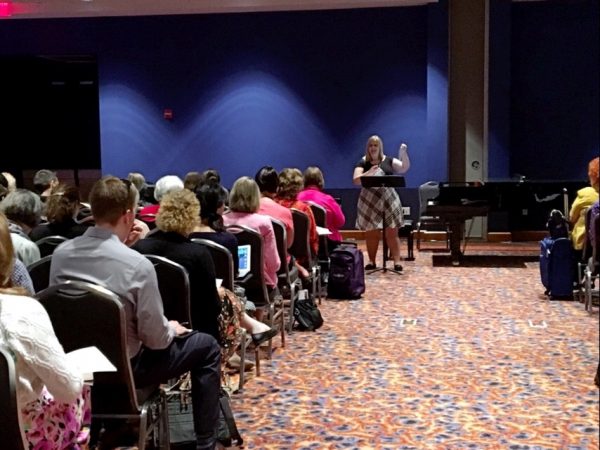
Christina Whitlock answered the following question in her presentation: What can we learn from sports team culture that can be incorporated into a music studio? Sports teams are social, and all about teamwork and interdependence.
There are 3 questions students need answered: (1) What is expected of me? (2) How am I contributing (to the studio)? How am I helping other students? (3) How will miss me if I am not here?
Christina made many suggestions for how to create a team culture in a studio. Strategic Play #1: hold group classes. Have students of 6-8 or more meet every 6 weeks or so. It may take time for group classes to take off and become fun and comfortable, but the efforts pay off.
Stretegic Play #2: Collaborative Projects. The possibilities are endless, but one example is having students play pieces from Burgmuller Op. 100. The younger students created artwork for the pieces to display at the recital. They also took a collection of donations for a local charity as well.
Strategic Play #3: Environmental Factors. Consider your studio “locker room”. Sports teams are all about legacy. Have pictures of your former teachers on the wall. Christina offers longevity rewards: an award for 5 years, and a wall plaque for 8 years. Are your students’ names displayed anywhere in your studio? Even if it is just your schedule? Display studio branding. Have a clean, organized space.
11:10am Teaching Students To Talk About Music, by David Cartledge.
This was one of my favorite sessions! David Cartledge talked about consciously developing his graduate students’ abilities to talk about music. The approach he described is adaptable for not only undergraduate students, but for any pre-college student.
The training operates in three stages: the comparison, the description, the opinion.
Begin with a list of all the pieces the student has learned, so that we can began knowing what the student already knows. The first exercise is to compare two pieces the student knows. Form, harmony/melody, rhythm/texture, use of the instrument, technique/philosophy. Give the student a short amount of class time and ask them to choose TWO parameters to talk about. The student then briefly verbally addresses the first piece, the second piece, and then the two in comparison. This exercise gives students great confidence! Always give students immediate feedback on how they did.
The description stage is where the student selects a piece that fits a parameter and describes how it fits the parameter. The goal is to be able to give a two-minute description of what playing or hearing a piece is like.
The opinion stage is an exercise in polite argument. The student gives an opinion about. About a confronting topic, such as serialism, prepared piano, etc.. Students learn that opinions cannot be expressions of gut feelings, but based on parameters and elements of music. The teacher’s feedback here should always be to take the opposite viewpoint. The student’s job is to defend and be able to respond to the teacher’s viewpoint. This exercise is a great preparation for dissertation defenses.
Common errors: giving up immediately, getting hostile, not listening and/or responding, and describing feelings instead of opinions.
These oral skill exercises can be applied to any level, and to any subject. Why wait for college for this? Make this part of every lesson.
After this session, we walked along the beautiful river walk to have lunch at Boudro’s.
Here is a photo of our group:
And a photo with blogger Tim Topham:
We spent the afternoon exploring the exhibit hall.
For dinner, we joined a meet-up organized by folks from the Facebook discussion group called Piano Teacher Central.
We enjoyed BBQ baby back ribs at the County Line.
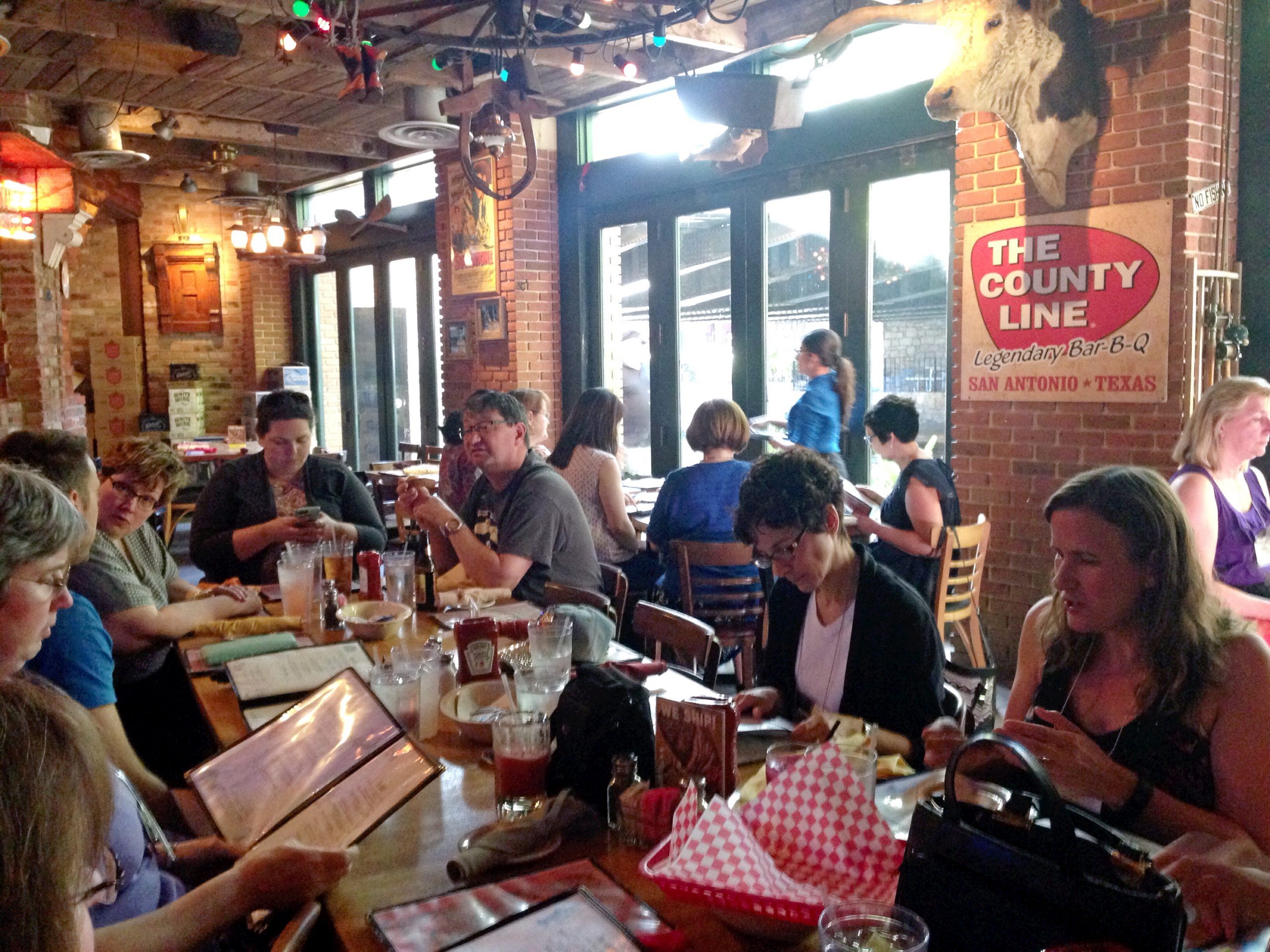
Afterwards, our group piled into a boat for a river walk tour!
Our tour guide had a great sense of humor. The ride was relaxing and so much fun!
It was a great way to end the evening.
Click here to go to Day 4.


